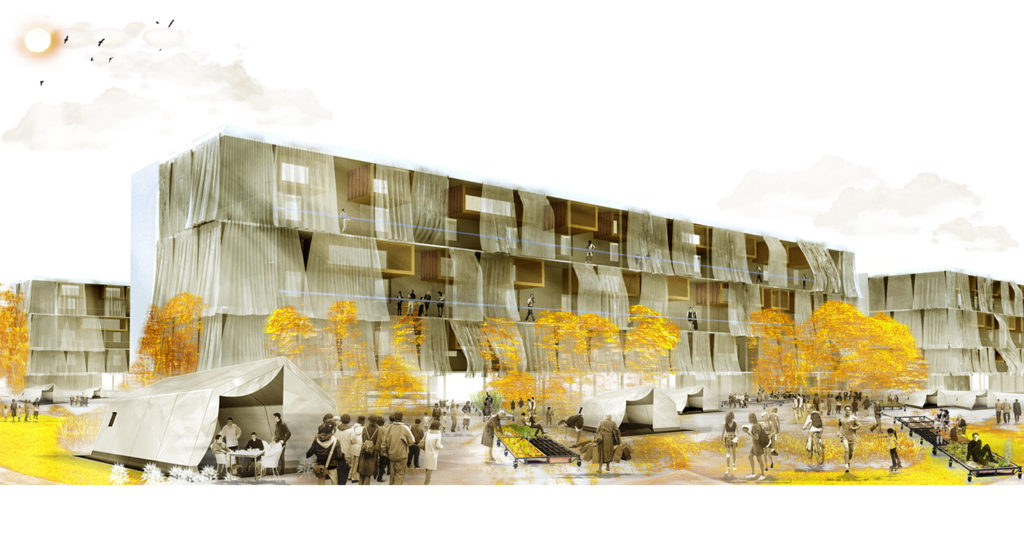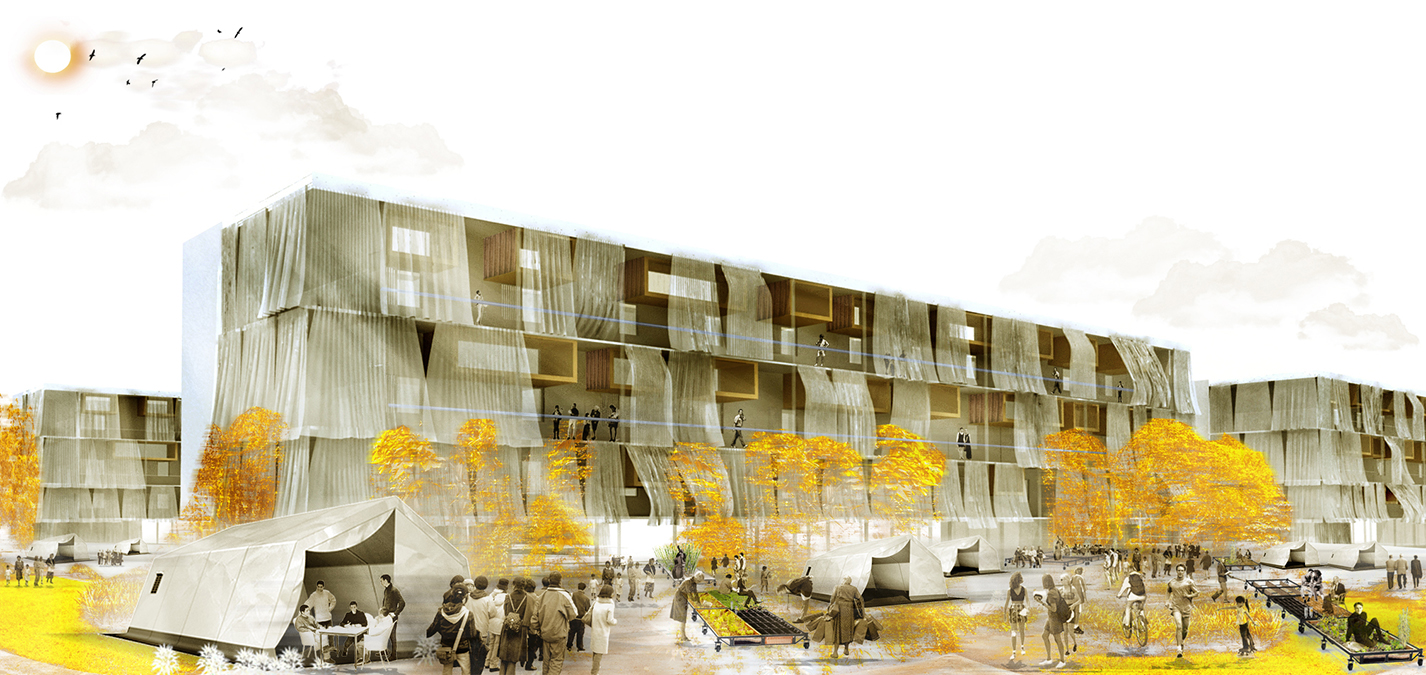
In recent years, scientists have warned that if climate change is not halted, the intensity of extreme weather events will increase. While a solution to this global problem is being sought, this proposal offers swift and effective accommodation to people who suffer from these phenomena, minimizing the transition time between shelter and home.

For this purpose, a transportable modular system is proposed, capable of accommodating different groupings at urban, building, and home scales, and adaptable to diverse urban or rural situations. The project delineates urban areas reserved for occupation during times of disaster. These areas are subdivided in emergencies and occupied by shelters until the final prefabricated homes arrive. The shelters can be rapidly assembled and inhabited by victims while the construction of the building continues. They are subsequently repurposed for the building’s exterior, providing protection and promoting awareness.

This project presents standards for nearly zero energy consumption and strategic actions at different scales.
Depending on the urban context, the architectural response will vary. The proposal will be more compact in the case of a consolidated city, while less dense solutions will be suggested for unconsolidated areas. The porticoed ground floor functions as a secure space during flooding. Community garden areas are distributed among different user groups of the building based on the initial camp subdivision. These gardens maximize user engagement in designing the collective space and reduce the impact of impermeable materials that exacerbate water-sensitive urban design.

The clustering of homes will evolve progressively based on inhabitants’ needs. A cooperative formed by the community of neighbors will oversee the building’s evolution and communal spaces. The corridor’s function will be informally determined by users based on their requirements. This element also facilitates natural cross ventilation, acting as a thermal buffer and light controller through curtains that allow adjustments to the facade according to climatic variations.
Modular construction enables flexibility not only in the overall building but also within dwellings. This system allows grouping one, two, or even three modules to create different types of houses. Simultaneously, these spaces can change over time based on the coexistence unit’s needs. Through cooperative management, if a cohabitation unit requires more space, its house can expand with the adjacent module. Conversely, if the living unit simplifies and space needs reduction, surplus modules can be separated and rented to others.

Thanks to cooperative management and renting isolated modules, it will be possible to work and live in the same building without both activities needing to occur in the same house or on the same floor. The modules feature an active mezzanine that doesn’t count as an additional level due to its dimensions. This offers ample storage and specific use space. The active mezzanine can extend over the gallery via retractable volumes, creating complementary extensions to the house with indeterminate uses, dependent on users, allowing visual connection with the street. Strategically placed, these spaces enhance room cross ventilation, aiding hot air dissipation in summer and conservation in winter.

Through these multi-scale actions directly impacting homes, a range of possibilities is generated toward creating a generous, expandable habitat. This habitat is connected to various community spaces and each floor’s landscaped extension, enhancing the living environment for all residents.
Mexico City, August 8, 2023
NOW WHERE WE KEEP THEM?
Team: Antonio Cantero + Consuelo Fernández + Lucía Martín López
Awards: Finalist best Presentation (International Architecture Competition Build Without Boundaries, 2013); Finalist best Modular Housing (International Architecture Competition Build Without Boundaries, 2013); Honorable Mention (Call for Proposals: Solutions. Social Cooperation Architects, 2015).
Exhibition: Cascina Triulza – Civil Society Pavilion, EXPO Milano 2015.


I recently drove through the earthquake-struck region in Croatia (Petrinja) and witnessed people living in ill-equipped shipping containers. This solution doesn’t only offer better living conditions and opportunities, but it restores dignity.